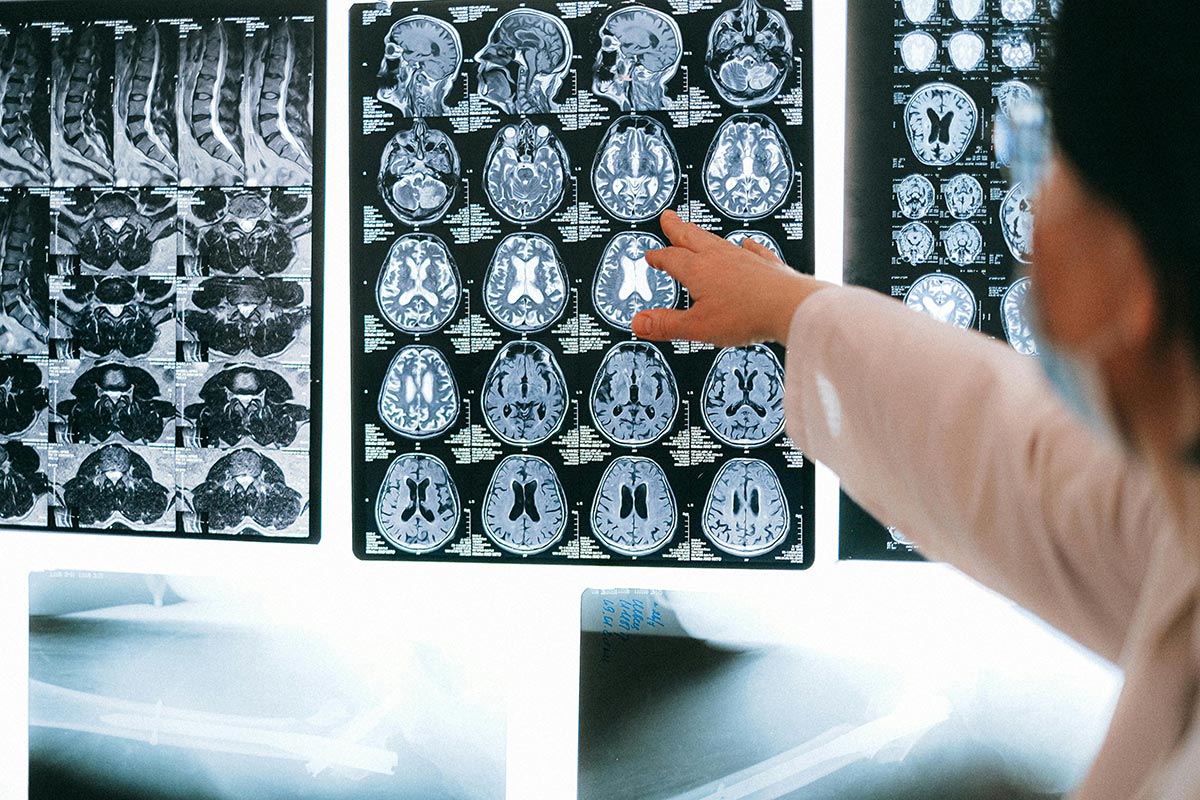

Understanding Treatment Plans
When it comes to devising effective treatment plans, it is crucial to engage in collaborative decision-making and develop a comprehensive plan. By involving patients in the decision-making process and considering their preferences and feelings, healthcare professionals can create treatment plans that align with the individual's needs and goals [1].
Collaborative Decision-Making
Collaborative decision-making involves a partnership between the patient and the healthcare provider. It allows patients to actively participate in their treatment decisions, ensuring that their voices are heard and respected. Through open communication and shared decision-making, patients can express their treatment preferences, discuss concerns, and ask questions to make informed choices about their care.
By involving patients in the decision-making process, healthcare providers can gain valuable insights into their preferences, values, and expectations. This collaborative approach fosters a sense of empowerment and ownership over one's own healthcare journey, leading to increased satisfaction and adherence to the treatment plan.
Importance of a Comprehensive Plan
A comprehensive treatment plan is a vital component of effective healthcare. It incorporates various elements to address the individual's specific needs and circumstances. To develop such a plan, healthcare providers gather detailed information from the client, including their medical history, mental health status, substance abuse history, and social support systems.
By ordering this information sequentially, healthcare providers can gain a comprehensive understanding of the client's past symptoms, events, diagnoses, treatments, and adversities. This chronological approach helps in identifying patterns, triggers, and strengths that inform the development of an individualized treatment plan.
A comprehensive treatment plan takes into account the client's strengths, limitations, support systems, and cultural influences. By considering these factors, healthcare providers can tailor the treatment approach to meet the unique needs of the individual [2]. This personalized approach enhances the effectiveness of the treatment and promotes better outcomes.
To ensure accurate and comprehensive information gathering, healthcare providers often follow a 12-step assessment process. This systematic approach helps in obtaining relevant information, understanding the client's background, and identifying the most appropriate treatment interventions.
By prioritizing collaborative decision-making and developing comprehensive treatment plans, healthcare providers can enhance the quality of care and improve patient outcomes. These approaches empower individuals to actively participate in their treatment journey, leading to more effective and patient-centered healthcare.
Components of Treatment Assessment

To develop effective and individualized treatment plans, a comprehensive assessment is essential. This process involves gathering detailed information, ordering that information sequentially, and assessing the strengths and limitations of the individual. These components play a crucial role in understanding the client's needs and formulating an appropriate treatment plan.
Gathering Detailed Information
During the assessment process, the counselor must gather detailed information about the client's mental health and substance abuse history. This includes obtaining information directly from the client, as well as from family or friends who can provide additional insight. By gathering a comprehensive account of the client's background, symptoms, and experiences, the counselor can gain a better understanding of their unique challenges and needs.
Ordering Information Sequentially
To effectively assess the client's mental health and substance abuse concerns, it is crucial to order the gathered information sequentially. This involves arranging the information in a chronological manner, from the occurrence of past symptoms and events to previous diagnoses, treatments, and adversities that have impacted the client's well-being. By organizing the information in this manner, the counselor can identify patterns, potential triggers, and significant factors that contribute to the client's current condition.
Assessing Strengths and Limitations
Another important component of treatment assessment is the evaluation of the client's strengths and limitations. This involves acquiring a comprehensive understanding of the client's support systems, cultural influences, and personal attributes that can impact their treatment journey. By considering these factors, the counselor can develop an individualized treatment plan that takes into account the client's unique circumstances and maximizes their chances of success [2].
Assessing the strengths and limitations of the client enables the counselor to tailor the treatment plan to their specific needs. It ensures that the approach is sensitive to their cultural background, supportive of their strengths, and addresses any limitations that may hinder their progress. By taking a holistic and comprehensive approach to assessment, treatment plans can be designed to provide the best possible outcome for the client.
In the roadmap to recovery, the assessment process is a critical step that lays the foundation for comprehensive treatment plans. By gathering detailed information, ordering it sequentially, and assessing strengths and limitations, counselors can gain a thorough understanding of the client's needs and develop a targeted and effective treatment plan. This approach helps to personalize care and increase the likelihood of successful treatment outcomes.
Tailoring Treatment Plans

When it comes to developing effective treatment plans, it's crucial to tailor them to the individual needs and circumstances of each patient. This personalized approach ensures that the treatment plan is aligned with the patient's goals and increases the chances of successful outcomes. In this section, we will explore three key aspects of tailoring treatment plans: identifying motivation levels, overcoming barriers and triggers, and following a 12-step assessment process.
Identifying Motivation Levels
Understanding the motivation levels of a patient is an essential step in tailoring a treatment plan. Motivation plays a significant role in driving individuals to make changes and engage actively in their treatment. It is important for both the counselor and the patient to explore what stage of change the patient is currently in and to determine their level of motivation to work towards healthier functioning or abstinence.
By identifying the patient's motivation level, the treatment plan can be adjusted accordingly. For instance, if a patient is highly motivated, the treatment plan can be more intensive and focused on building upon their existing motivation. On the other hand, if a patient has low motivation, the treatment plan may include strategies to enhance their motivation and address any ambivalence they may have.
Overcoming Barriers and Triggers
As part of the treatment planning process, it's important to identify and address the barriers and triggers that may hinder the patient's progress. Barriers can be internal, such as negative thought patterns or lack of self-confidence, or external, such as environmental factors or social influences. Triggers, on the other hand, are specific situations or stimuli that may lead to a relapse or a setback in the treatment process.
By identifying these barriers and triggers, the treatment plan can incorporate strategies to overcome them. This may involve developing coping skills, creating a supportive environment, or providing resources to help the patient navigate challenging situations. It's important to work collaboratively with the patient to develop strategies that are tailored to their specific needs and circumstances.
Following a 12-Step Assessment Process
To ensure that the treatment plan is comprehensive and addresses all relevant aspects, it's important for the counselor to follow a 12-step assessment process. This process involves gathering detailed information about the patient's history, current situation, strengths, and limitations [2].
The 12-step assessment process includes sequentially ordering the information gathered, allowing for a systematic understanding of the patient's needs and challenges. By following this process, the counselor can gain a holistic view of the patient's situation and develop a treatment plan that takes into account all relevant factors.
By tailoring treatment plans to the unique needs of each patient, the chances of successful outcomes are greatly increased. Identifying motivation levels, addressing barriers and triggers, and following a comprehensive assessment process are essential components in developing effective and personalized treatment plans.
Incorporating Patient Preferences
In the development of comprehensive treatment plans, it is essential to incorporate patient preferences to ensure a patient-centered approach. By considering the subjective values of individuals, healthcare professionals can tailor treatment plans that align with their unique needs and priorities. This section explores different methods for incorporating patient preferences into treatment plans, including eliciting subjective values, utilizing decision analysis, and using computer-based tools.
Eliciting Subjective Values
Eliciting subjective values involves actively engaging patients in discussions about their preferences, priorities, and goals for treatment. This process allows healthcare professionals to better understand the patient's perspective and incorporate their values into the decision-making process. By eliciting subjective values, healthcare professionals can ensure that treatment plans are aligned with the patient's personal beliefs and preferences.
Utilizing Decision Analysis
Decision analysis offers a structured approach to understanding treatment choices, particularly when faced with multiple uncertainties and personal values. This method helps healthcare professionals explore preferences for different treatment options in a systematic and evidence-based manner. Decision analysis allows for a comprehensive evaluation of the risks, benefits, and trade-offs associated with each treatment option. By utilizing decision analysis, healthcare professionals can make informed decisions and incorporate patient preferences into the treatment planning process.
Using Computer-Based Tools
Computer-based tools offer promising strategies for incorporating patient preferences into treatment planning. These tools provide a platform for patients to clarify their values and make decisions that align with their preferences. Computerized surveys and instructional programs can guide patients through decision analytic methods, helping them understand the implications of different treatment options and clarify their priorities. By using computer-based tools, healthcare professionals can facilitate patient engagement and enhance the shared decision-making process.
One example of computer-based tools is the Comprehensive Health Enhancement Support System (CHESS), which operates as a module-based computer system for in-home or healthcare setting use. CHESS helps patients clarify their values and preferences as they prepare to make decisions that align with their goals. Similarly, the Stanford Center for the Study of Patient Preference has developed computerized surveys and instructional programs that walk patients through decision analytic methods, aiding them in clarifying their preferences.
Incorporating patient preferences is a vital aspect of developing comprehensive treatment plans. By eliciting subjective values, utilizing decision analysis, and using computer-based tools, healthcare professionals can ensure that treatment plans are individualized and aligned with the needs and preferences of the patient. This patient-centered approach promotes active engagement and shared decision-making, ultimately leading to more effective and satisfactory treatment outcomes.
Role of Assessments in Mental Health
In the realm of mental health, assessments play a vital role in guiding comprehensive treatment plans. These assessments help clinicians identify specific conditions, personalize care plans, and track treatment progress.
Identifying Specific Conditions
Comprehensive evaluations, including interviews, assessments, and observations, serve as the foundation for identifying specific conditions affecting individuals in need of mental health treatment [4]. By thoroughly assessing biological, psychological, and environmental factors, clinicians can gain a deeper understanding of the core issues driving the condition. This knowledge enables them to tailor interventions and treatment plans to address the unique needs of each individual.
Personalizing Care Plans
Personalized care is essential in mental health, as it acknowledges the diversity of experiences individuals may have. Comprehensive assessments help clinicians create personalized care plans by considering a patient's history, symptoms, strengths, and preferences [4]. By taking these factors into account, clinicians can maximize the chances of successful treatment outcomes. Personalized care plans ensure that interventions are tailored to the individual, increasing the effectiveness and relevance of the treatment approach.
Tracking Treatment Progress
Assessments provide a means of tracking treatment progress in mental health. By regularly evaluating the effectiveness of interventions, clinicians can make informed adjustments as needed to ensure that treatment remains aligned with the evolving needs of the individual [4]. This ongoing monitoring allows clinicians to gauge the impact of treatment, identify areas of improvement, and optimize the care provided. Additionally, tracking treatment progress helps individuals and their healthcare team celebrate milestones and make necessary modifications to the care plan.
In conclusion, assessments play a crucial role in mental health treatment. They facilitate the identification of specific conditions, enable personalized care plans, and provide a means of tracking treatment progress. By incorporating comprehensive assessments into mental health practices, clinicians can enhance the effectiveness of interventions and better support individuals on their road to recovery.
Family Influence on Treatment
Family members play a significant role in the treatment journey of individuals, particularly in cases of serious illnesses or addiction. Understanding the impact of family influence on health-care decisions and treatment plans is crucial for providing comprehensive care.
Impact on Health-Care Decisions
Research shows that family members can have a substantial influence on health-care decisions, especially for individuals with serious illnesses like cancer. It is estimated that around 50% of healthy outpatients aged 65 and older have family involvement in their medical care [5]. Patients often seek counsel and validation from their friends and family when it comes to discussing their symptoms and seeking medical attention. In fact, 92% of patients discuss their symptoms with a family member or friend, highlighting the important role that family plays in diagnosis-seeking behaviors and treatment-related decisions [5].
Role in Treatment Decisions
Family caregivers also play influential roles in the treatment and care plans that patients follow. In some cases, family members may persuade patients to change doctors or treatment approaches during the course of treatment. For example, 17% of patients with lung cancer have reported being persuaded by their families to change doctors. While family support and involvement can be beneficial, it is essential to address conflicts that may arise between family preferences and clinical recommendations to ensure the best possible treatment outcomes.
Patients may feel pressured by family members to select a particular treatment option, even if the evidence supports a different approach. This influence can sometimes interfere with the patient-physician relationship, leading patients to make treatment decisions based on family preferences rather than clinical superiority. Recognizing and understanding these family influences is crucial for healthcare providers to provide efficient and effective care.
Influence on Patient-Physician Relationship
Family members can have a significant impact on the patient-physician relationship. Patients often rely on their family members for support and guidance, seeking their opinions and advice regarding treatment decisions. However, conflicts may arise when family preferences clash with medical recommendations. Open and effective communication between the patient, family members, and healthcare providers is essential to navigate these challenges and ensure that the patient's best interests are prioritized.
By recognizing the influence of family members on health-care decisions and treatment plans, healthcare providers can engage in collaborative decision-making processes that involve both the patient and their family. This approach helps to ensure that treatment plans are tailored to the individual's needs while taking into account the perspectives and preferences of their support system.
Family involvement can enhance the overall treatment experience and contribute to better treatment outcomes. However, it is important for healthcare providers to maintain the patient's autonomy and ensure that treatment decisions are based on evidence-based practices and personalized care plans.
References
[2]:
[3]:
[4]:
[5]:
.svg)





